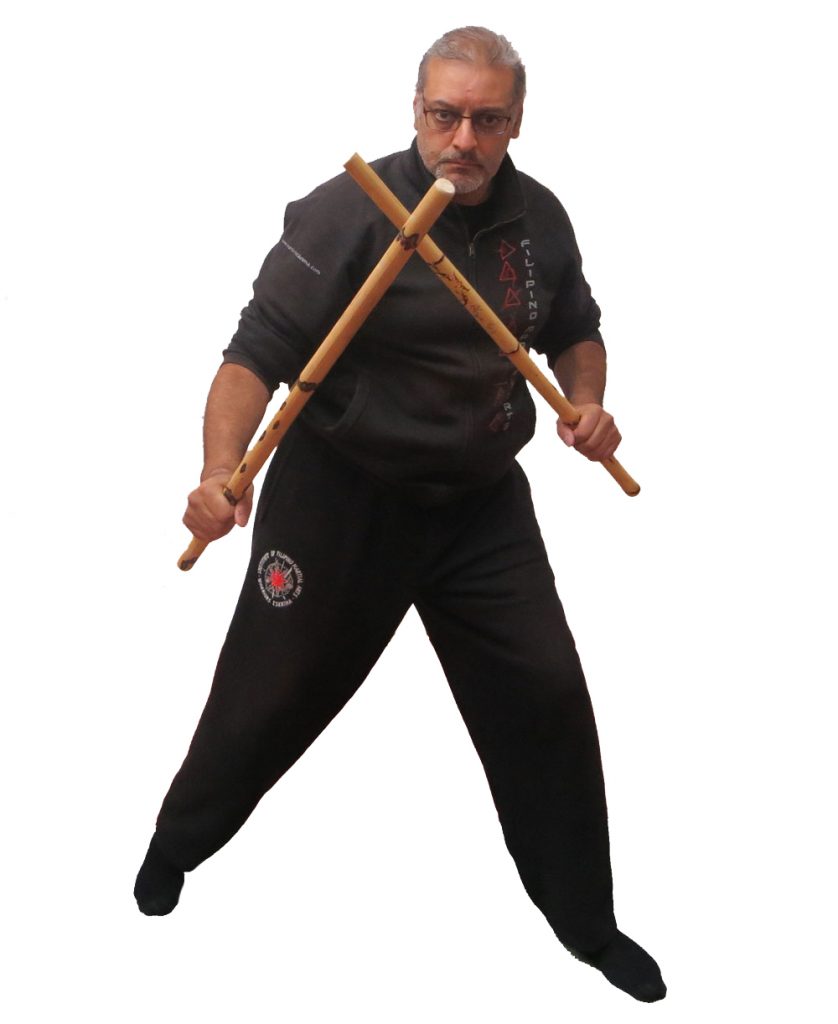Doble baston also known as doble olisi, are common names for a group of techniques involving two sticks. The art is more commonly known around the world as Sinawali meaning “to weave”. The term Sinawali was taken from a matting that is commonly used in the tribal Nipa Huts which is made up of woven pieces of palm leaf and used for both flooring and walls.
The double stick aspect of the system tends to be easy on the eye for the audience, as most onlookers find the interweaving slashing of the weapons to be aesthetically pleasing. It must be stressed that all the movements in the double stick system are functional however flashy they may appear.
The double sticks also develop and enhance attributes that are applied in other areas such as the empty hands, single and double daga, Espada y Daga and single stick in regards to the live hand. It is not unusual to find many empty hand mechanics within the double stick curriculum that can be translated and applied in empty hand format. Thus, practitioners often find their empty hand skill improves greatly as the double stick work progresses. Also the coordination required for double stick work sets the stage for advancing to Espada y Daga.
Sinawali develops various weapon skills the use of two weapons simultaneously, ambidexterity, chambering, co-ordination, rhythm and timing and reference points used to enter into finishing techniques.
Sinawali requires the user to use both left and right weapons in an equal manner; many co-ordination drills are used to help the practitioner become more ambidextrous and when two sticks are used you will be able to see flowing combinations of attacks with one stick defending and the other stick counter attacking. The preferred range of Sinawali is largo/medio (long/medium) range; the double stick section of the art is often taught mainly at the intermediate levels and above and is considered one of the most important areas of learning in the art.

